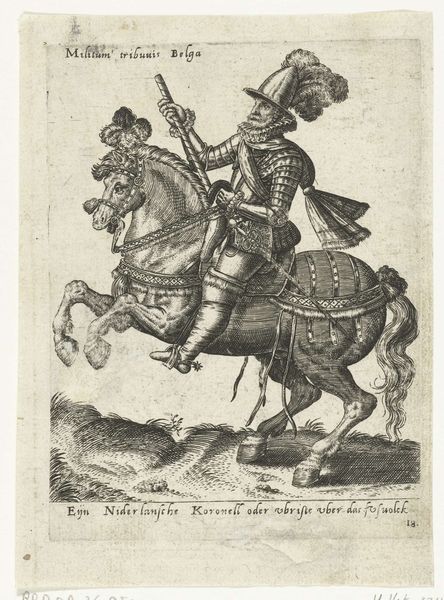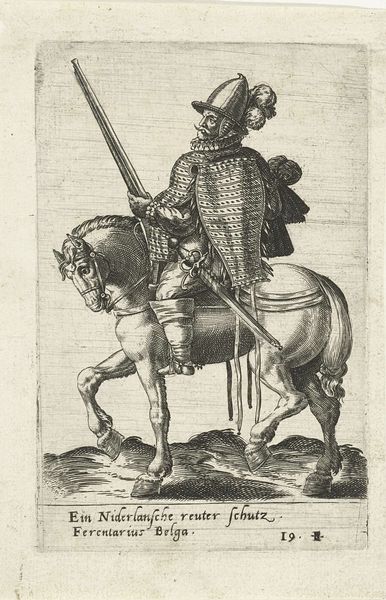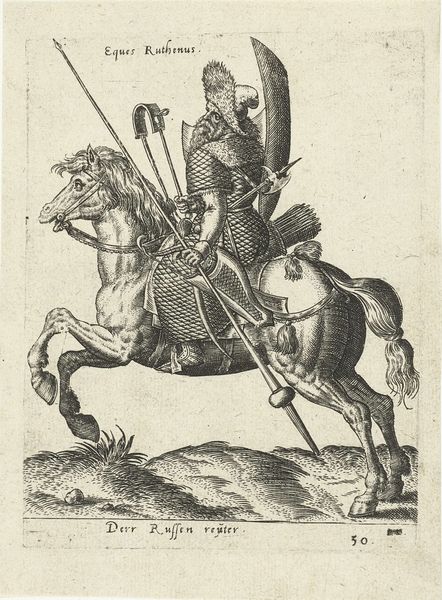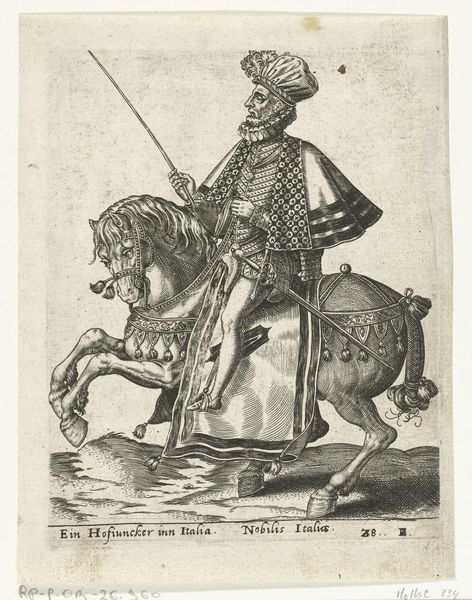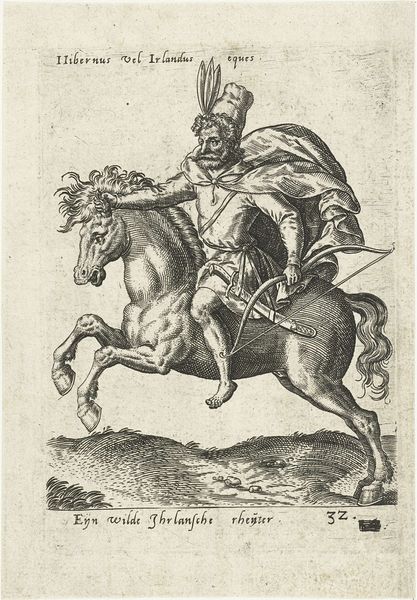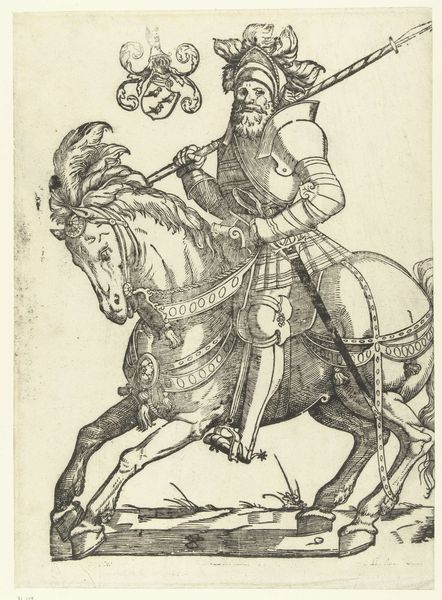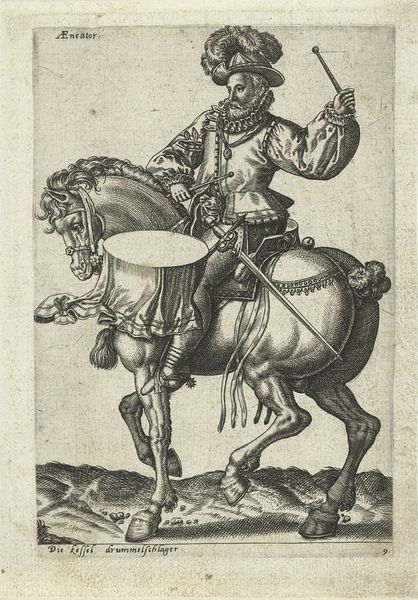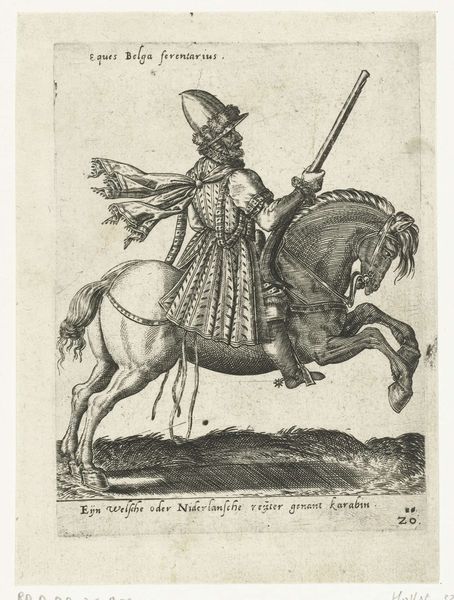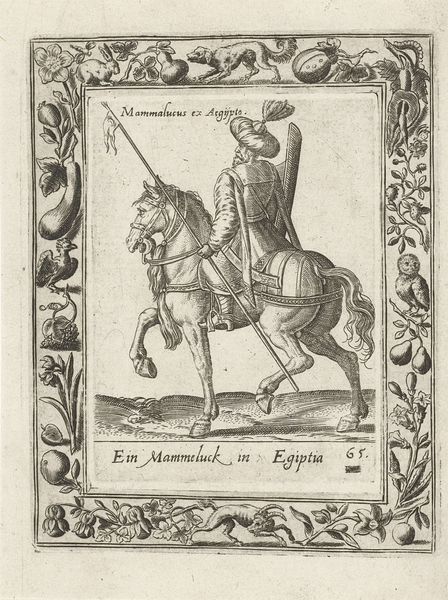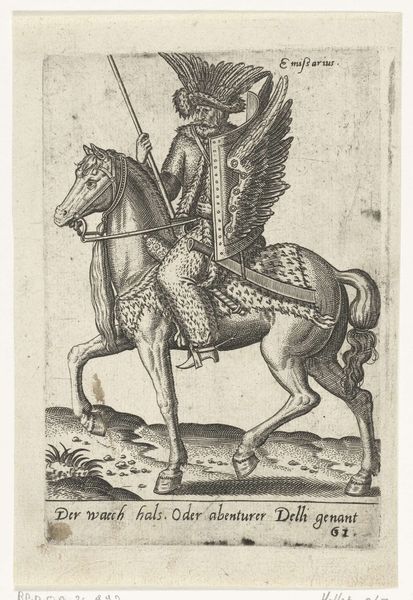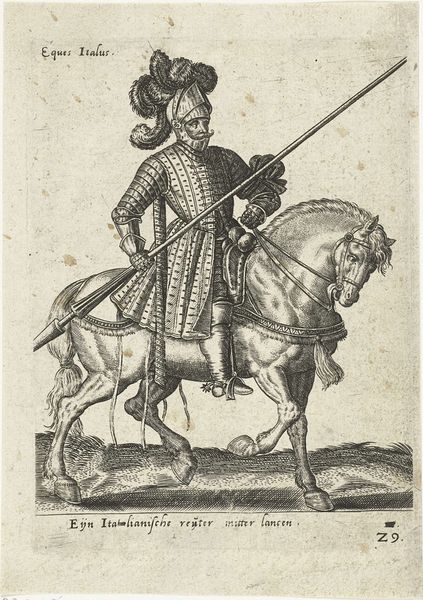
print, engraving
#
portrait
# print
#
pen sketch
#
figuration
#
history-painting
#
northern-renaissance
#
engraving
Dimensions: height 158 mm, width 121 mm
Copyright: Rijks Museum: Open Domain
Abraham de Bruyn made this engraving of a German Cavalry Commander sometime in the late 16th century. This image exists because of the development of printmaking as an industry, facilitating the relatively inexpensive circulation of images throughout Europe. The commander is idealized as a symbol of military might, the engraver drawing upon established visual codes to convey the sitter’s social standing, such as his fine clothing, the well-bred horse, and upright posture. Engravings like these played a role in shaping social identities by offering templates of status and aspiration. But the print is equally an economic object: it relies on the markets and trade networks of Antwerp, where de Bruyn was active, and serves the desires of a rising merchant class. To fully understand this image, we might delve further into the history of costume, the economics of printmaking, and the structure of the military in 16th century Europe.
Comments
No comments
Be the first to comment and join the conversation on the ultimate creative platform.

